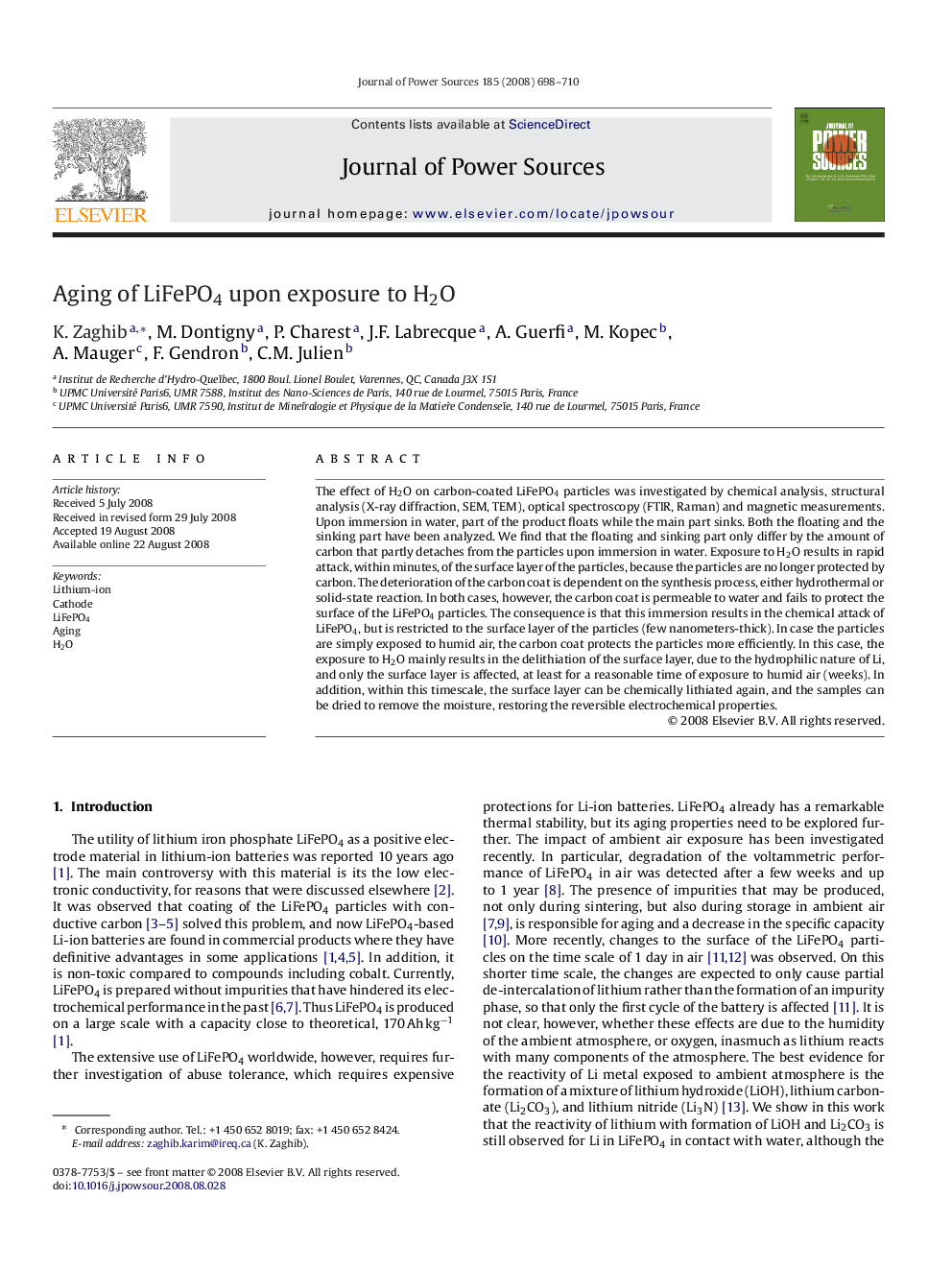| کد مقاله | کد نشریه | سال انتشار | مقاله انگلیسی | نسخه تمام متن |
|---|---|---|---|---|
| 1290170 | 973320 | 2008 | 13 صفحه PDF | دانلود رایگان |

The effect of H2O on carbon-coated LiFePO4 particles was investigated by chemical analysis, structural analysis (X-ray diffraction, SEM, TEM), optical spectroscopy (FTIR, Raman) and magnetic measurements. Upon immersion in water, part of the product floats while the main part sinks. Both the floating and the sinking part have been analyzed. We find that the floating and sinking part only differ by the amount of carbon that partly detaches from the particles upon immersion in water. Exposure to H2O results in rapid attack, within minutes, of the surface layer of the particles, because the particles are no longer protected by carbon. The deterioration of the carbon coat is dependent on the synthesis process, either hydrothermal or solid-state reaction. In both cases, however, the carbon coat is permeable to water and fails to protect the surface of the LiFePO4 particles. The consequence is that this immersion results in the chemical attack of LiFePO4, but is restricted to the surface layer of the particles (few nanometers-thick). In case the particles are simply exposed to humid air, the carbon coat protects the particles more efficiently. In this case, the exposure to H2O mainly results in the delithiation of the surface layer, due to the hydrophilic nature of Li, and only the surface layer is affected, at least for a reasonable time of exposure to humid air (weeks). In addition, within this timescale, the surface layer can be chemically lithiated again, and the samples can be dried to remove the moisture, restoring the reversible electrochemical properties.
Journal: Journal of Power Sources - Volume 185, Issue 2, 1 December 2008, Pages 698–710